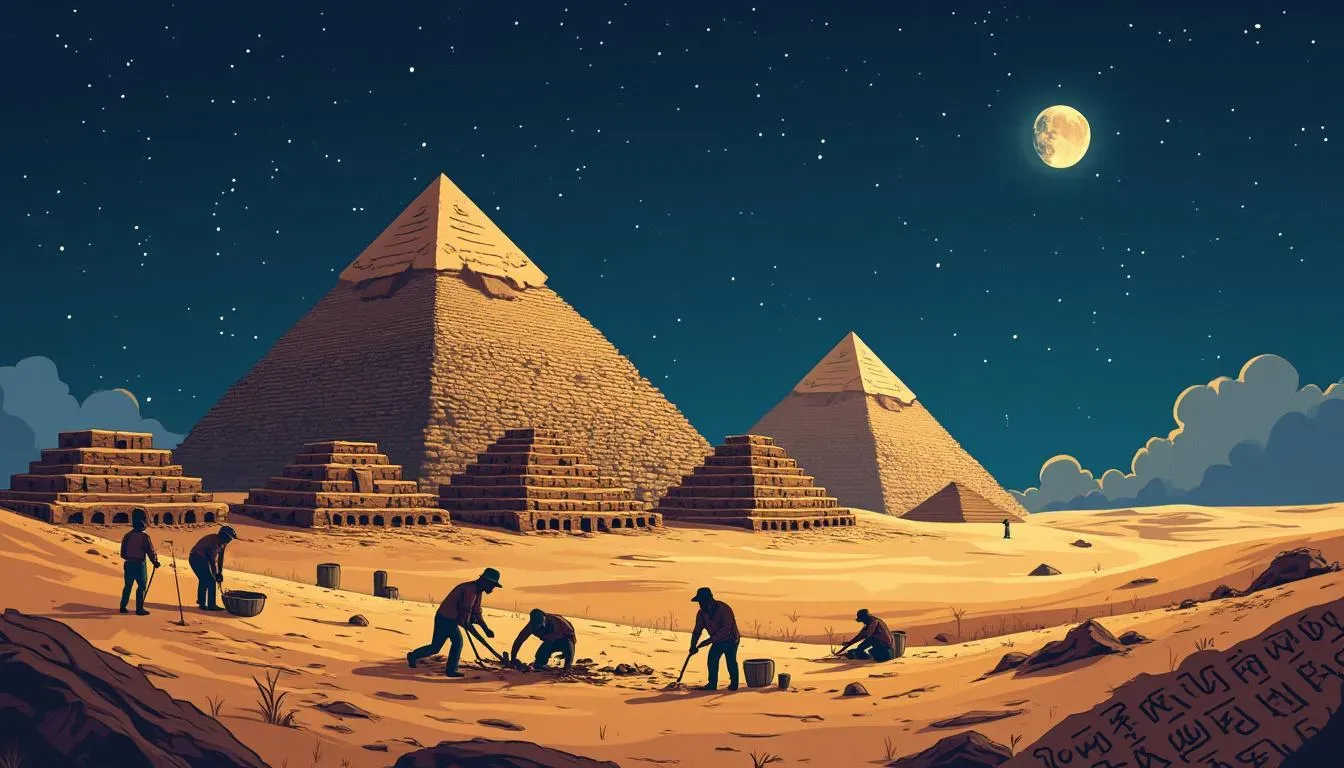Introduction
Egypt, an unparalleled source of archaeological treasures, holds within its sands the secrets of an ancient civilization. As cameras gained rare access for an entire season of excavations, we delve into the mysteries buried beneath the desert, exploring the critical moments in uncovering the hidden treasures of history. Among these are the wonders of Egypt's greatest architectural structures—the pyramids.
"Egypt's sand-covered secrets are the inception of historical wonders yet to be unfolded."
The First Pyramids and Their Architects
Our journey begins in Saqqara, ten miles south of the Great Pyramids of Giza, where the necropolis houses the remains of ancient Egypt's pioneering structures. Here, Egyptologist Chris Norton explores the history behind the very first pyramid—the Step Pyramid. Designed by the genius architect Imhotep, this structure was a groundbreaking achievement both in scale and architecture.
Imhotep, once a commoner, rose through ranks to become the chief architect for Pharaoh Djoser. His innovation of using stone rather than mud brick set a new standard, allowing for monumental constructions. The evolution of the burial structure from a single platform, mastaba, to the multi-layered Step Pyramid, revolutionized ancient architecture.
Imhotep's imagination transformed stones into a legacy that outlived its creators.
The Quest for Imhotep's Tomb
Though his architectural feats left an indelible mark on history, Imhotep's resting place remains elusive. Project leader Miroslav Barter leads the archaeological quest to find Imhotep's tomb in Saqqara. Various discoveries, such as pottery and skeletal remains, hint at the historical narrative of the necropolis but leave many questions unanswered.
Yet, it is the rich symbolism found on burial structures, like the starry ceiling motifs inside Djoser's burial chambers, that spark insight. These symbols were perhaps designed to illustrate a journey to the afterlife, indicating the depth of ancient Egyptian beliefs.
Excavations Reveal Hidden Chambers and Texts
The team also investigates subterranean tunnels beneath Saqqara to explore why these expansive structures were dug. Each tunnel leads to different parts of history, unraveling stories of pharaohs whose afterlife voyages were reflected in the pyramid designs.
Alongside physical explorations, the decoding of ancient hieroglyphs found in places like the tombs of Pharaoh Ibi and Pepi II, sheds light on religious beliefs that spurred the creation of these edifices. These texts, known as Pyramid Texts, are among the oldest religious scripts, providing clues to the mystical faiths that these pyramids were built to honor.
Innovations in Religious Practice
A staggering discovery by Camille's team was a trench resembling a moat around Djoser's pyramid. Rather than serving as a mere quarry, new findings suggest it might have represented a spiritual journey, equipped with symbolic items like elaborately carved harpoons, metaphorical tools designed for the king's celestial voyage.
Another significant breakthrough involved a vast treasure trove of Pyramid Texts within Pepi II’s pyramid, reinforcing the spiritual motivations behind pyramid constructions. These include texts that detailed the rites and spells believed to secure a pharaoh’s successful journey to the afterlife.
Glimpses into the Lives of Ancient Architects
As excavations continue to unfold tales of ancient ingenuity, the focus also shifts to understanding the individuals who created these lasting monuments. One fascinating figure is Ptahwer, another master craftsman from a later dynasty, whose work not only enhanced architectural beauty but also honored Pharaonic aspirations, meriting him a privileged burial near Djoser's monumental pyramid.
"In the shadow of pyramids lies the essence of timeless dedication—every stone a testament to man's desire for legacy."
Conclusion
Even as archaeologists persist in their quest to locate Imhotep's tomb, the discoveries continually underscore the complex interplay of architectural excellence, religious devotion, and personal ambition that characterized ancient Egyptian civilization. Through these structures, the pharaohs who were once mortal are immortalized, leaving behind a rich legacy that still captivates our imaginations today.
Each grain of sand in the desert is a page of history waiting to be turned, a testament to the enduring human spirit striving toward immortality.
ARCHAEOLOGY, SAQQARA, EGYPTIAN HISTORY, IMHOTEP, PYRAMIDS, YOUTUBE, ARCHAEOLOGICAL DISCOVERIES, BURIED TREASURES, ANCIENT EGYPT

